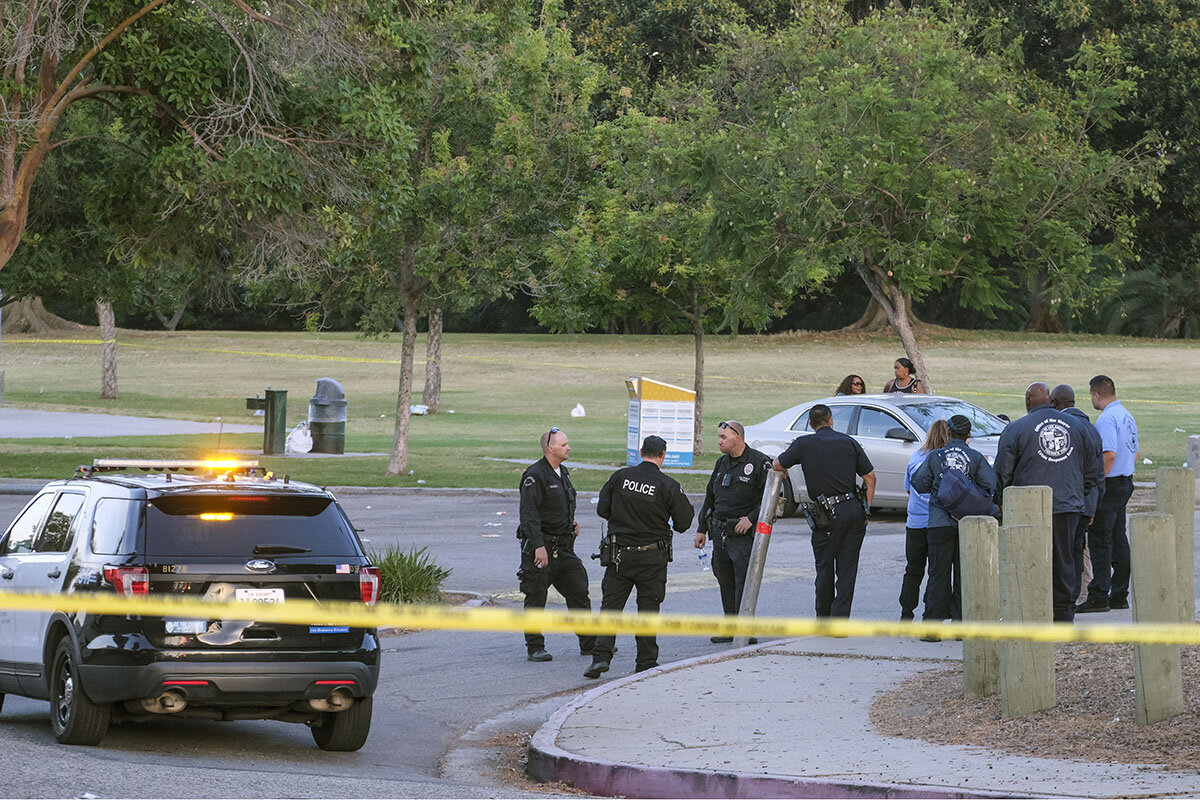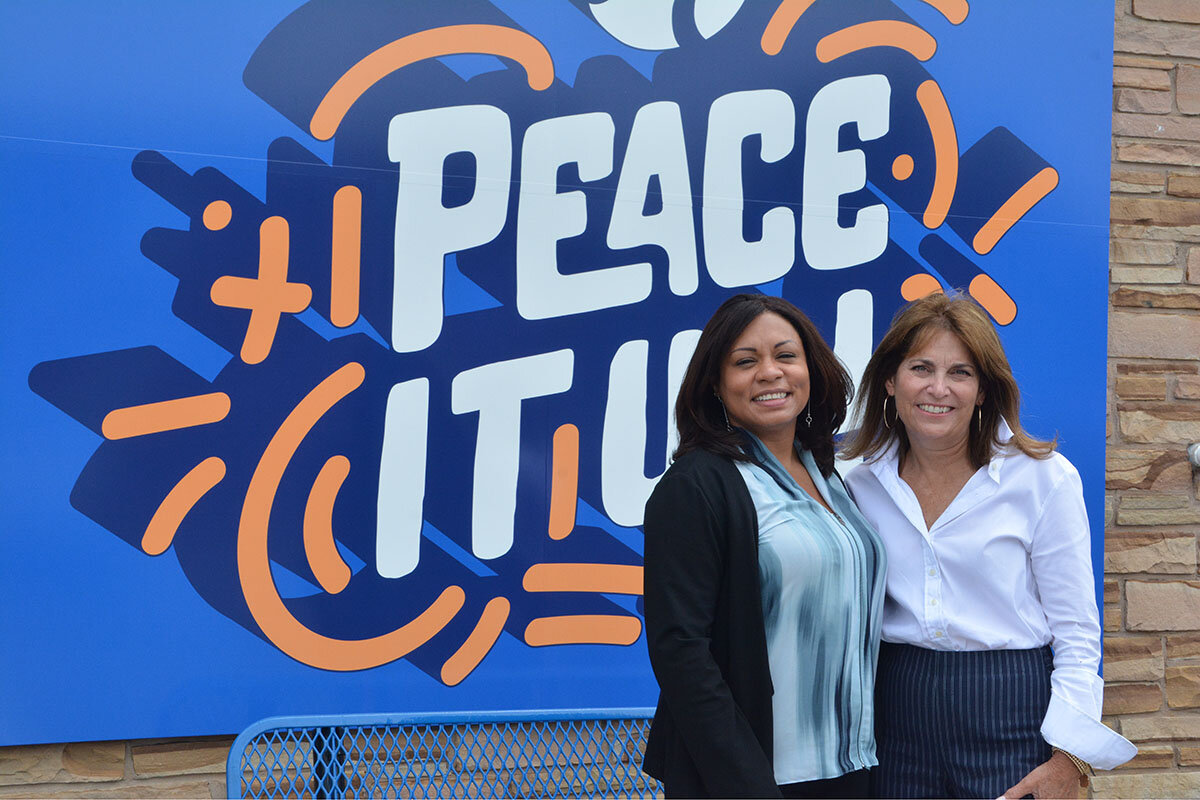US is trying to stop mass shootings. How about other gun crimes?
Loading...
| Hartford, Conn.
For Janet Rice, the Sheldon Oaks Apartments in downtown Hartford, Connecticut, hold a lot of memories. This is where her son Shane took his first steps. It is also where, almost two decades later, he took his last steps.
In October of 2012, Shane Oliver had just started a small business fixing up and reselling used cars. He’d gone back to the Sheldon Oaks with his girlfriend to pick up the remaining balance on a sale. A fight broke out. Mr. Oliver, then 20 years old, was shot and killed.
The whole city is full of memories like this for Ms. Rice.
Why We Wrote This
A story focused onFor the first time in 30 years, Congress passed bipartisan gun legislation after the tragic school shooting in Uvalde, Texas. Will it help with the day-to-day violence that causes far more gun deaths?
“Since losing my son, I’ve lost a nephew on the streets of Hartford. I lost my godson just last year,” she says. “The person who shot him was his friend – someone who sat at his mom’s kitchen table and shared dinner.”
This summer, for the first time in three decades, Congress passed legislation aimed at reducing gun violence, after a spate of mass shootings shook the nation – including one at a grocery store in Buffalo, New York, and another at an elementary school in Uvalde, Texas. Nineteen children getting killed inside their classroom is the “kind of cataclysm that moves people to action,” Connecticut Sen. Chris Murphy, a lead negotiator for the bill, told the Monitor.
The Bipartisan Safer Communities Act will provide funding for states to implement red flag laws, enhance screening processes for gun purchasers under the age of 21, and prevent those convicted of domestic abuse from owning a gun for a period of time, along with channeling billions of dollars into mental health and school safety.
Ms. Rice applauds the measure and hopes it will prevent more mass shootings like the one in Uvalde. But she doesn’t believe it will have much impact on communities like hers and the gun violence that happens there “every single day.”
Activists and experts cite a variety of measures they think would help address the problem, from community policing to gun licensing laws. But first, many say, there needs to be a broader acknowledgement of the prevalence of this type of gun violence – and the lower-income, majority Black neighborhoods that are most impacted by it. Mass shootings – which comprised 38 of the record 45,222 U.S. gun deaths recorded by the FBI in 2020 – receive an outsize proportion of public attention due to their shocking nature. To make communities like Hartford safer, they say, would require sustained attention to the other kind of violent crime that too often is ignored.
Over the Fourth of July weekend, for example, the news media was focused on a mass shooting at a parade in the high-income, white Chicago suburb of Highland Park, Illinois, in which seven people were killed and 46 injured. But there were fewer reports about what occurred that same weekend some 30 miles south, where 10 people were killed and 62 were injured across dozens of shootings on Chicago’s South Side.
“I think America is taking mass shootings seriously, but I don’t think they’re taking community-level gun violence seriously,” says Ms. Rice. “And that needs to change.”
While they are talked about a lot, there is no set definition for mass shootings. The FBI defines “mass murder” as four people killed, which can include gun crimes. Other groups, such as the Gun Violence Archive, include incidents in which four people are injured, even if no one dies. Even with that more expansive definition, fewer than 2% of the almost 27,000 people killed by guns in the U.S. so far this year were victims of a mass shooting. More than half were suicides, which typically make up the largest share of gun deaths. The rest, various data sets suggest, were killed in incidents like the one in which Ms. Rice’s son lost his life.
After declining for decades, homicides began rising again in 2018. In 2020 and 2021, both the murder rate and violent crime spiked sharply, as the pandemic shuttered businesses and led to an increase in drug and alcohol use. Murder rates in cities rose by more than 30%, more than two-thirds of which were committed with a firearm.
Official data for 2022 is not yet available, but a recent compilation of national data by The New York Times found a slight downtick in the murder rate this year of about 3%. Still, many cities, including Hartford, have reported similar rates of gun crimes this summer compared with last.
“It just snowballs”
Experts point to many reasons for the relative lack of attention given to this type of gun violence, from the numbing effect of a steady drumbeat of incidents, to the fact that they tend to occur in low-income neighborhoods and among marginalized groups.
An analysis of 2020 data, the most recent available, from the Centers for Disease Control and Prevention, found that Black men between the ages of 15 and 34 were over 20 times more likely to be victims of gun homicide than their white counterparts. Put another way, although this demographic represents 2% of the total U.S. population, it accounts for almost 40% of all gun fatalities in 2020, according to a study by the Johns Hopkins Center for Gun Violence Solutions released in April. According to FBI data from 2019, almost 90% of Black homicide victims were killed by Black offenders – a high rate of intraracial violence that is also seen in white and other racial groups.
Activists say that fact has made some politicians reluctant to highlight the problem, out of a fear of perpetuating racist tropes.
“It shouldn’t be looked at as ‘Black on Black violence.’ It should be looked at as violence in neighborhoods that face a lack of human resources,” says Jeremy Stein, executive director of CT Against Gun Violence.
Many also acknowledge there’s a sense of hopelessness that can set in as violent incidents occur with growing frequency. Local activists in Hartford, a majority Black and Latino city with stark racial and wealth divides, say gun violence there is part of an interconnected cycle of poverty, hunger, poor education, housing shortages, and crime.
“There are ‘mass shootings’ happening in our neighborhoods all of the time,” says Jacquelyn Santiago Nazario, the CEO of Compass Youth Collaborative, a nonprofit in Hartford aimed at helping at-risk youth. “Thankfully people aren’t always hurt, but you have to understand that even hearing those gunshots creates a ripple effect of fear and trauma within the community that is not easily remedied.”
Compass connects mentors – whom they call peacebuilders – with young people to help them stay in school, find job opportunities, and navigate the same neighborhood conflicts they themselves experienced. In a brightly painted building behind the Compass office, several teens joke around with older men in orange peacebuilder shirts. Some are sprawled on the floor munching on doughnuts while others work with tutors. According to internal data collected by Compass, 89% of the youths they work with have lost family members or friends to homicide.
Ayelet Chozick, a director at Compass, tells the story of a young man who was shot and then went out and bought a gun because he felt the need to protect himself. He was then charged with possessing a gun and wound up in the juvenile justice system.
“It just snowballs,” says Ms. Chozick, “and you get caught up in that cycle of violence.”
From biometrics to community policing
One ongoing challenge is that there has been little agreement about how best to address this problem legislatively.
While many activists say they would happily support reinstating an assault weapons ban like the one that expired in 2004, they also recognize that those are not the weapons used in most instances of community gun violence. “That’s not what killed my son,” says Ms. Rice.
At the same time, although the guns used in domestic violence, suicides, and mass shootings are often obtained legally, much of the violence plaguing cities like Hartford comes from guns obtained illegally through social networks or underground distributors.
For this reason, Odis Johnson, a social policy professor at Johns Hopkins University and part of their Center for Gun Violence Prevention and Policy, advocates for harsher penalties for illegal gun distributors and biometric finger locks on guns so they can only be used by their owner.
And because many of these guns are brought to cities like Hartford by underground distributors who travel across state lines, some advocates like Ms. Chozick are pushing for nationwide laws over state initiatives.
Mr. Stein, with CT Against Gun Violence, hopes federal lawmakers will turn to passing enhanced background checks for purchasers as their next piece of gun safety legislation.
The other crucial element, as most see it, is enhanced policing.
After the 2020 murder of George Floyd by police in Minneapolis, many liberal protesters across the country advocated for “defunding” or dismantling police departments – a stance that generated a backlash as violent crime spiked, and which some Democrats running for office are now taking pains to renounce.
Polling shows police divestment was always a far more popular policy among white Democrats. According to a 2021 Pew poll, Black and Hispanic Democrats were more likely than white Democrats to say police spending in their neighborhood should be increased, not decreased.
Almost all gun safety experts speak to the value of community policing, along with violence prevention programs that can stop the shooting before it begins. The Bipartisan Safer Communities Act allocated $250 million for community-based violence prevention initiatives like Compass. Still, that pales compared to the $5 billion President Joe Biden would have allocated for it in his failed Build Back Better agenda.
“That’s probably the smallest amount that passes muster as a serious response,” says Thomas Abt, a senior fellow on the Council on Criminal Justice and author of the book “Bleeding Out: The Devastating Consequences of Urban Violence – and a Bold New Plan for Peace in the Streets.” ”On the other hand, it’s more than we’ve seen in the past.”
Some say the mere fact that Congress did something this year to combat mass shootings – even if it doesn’t directly address community gun violence – is significant and could lead to further progress.
“There is no way we can curb everyday violence without first having these provisions in place that make it a little bit more difficult for those who shouldn’t have guns to be able to get them,” says Professor Johnson of Johns Hopkins. “It tends to be the case that when we have an event where the nation feels invested in a solution – such as mass shootings – that we finally get to a point where we actually meet some of the needs of these urban centers that have been trying to contend against gun violence for so long.”








